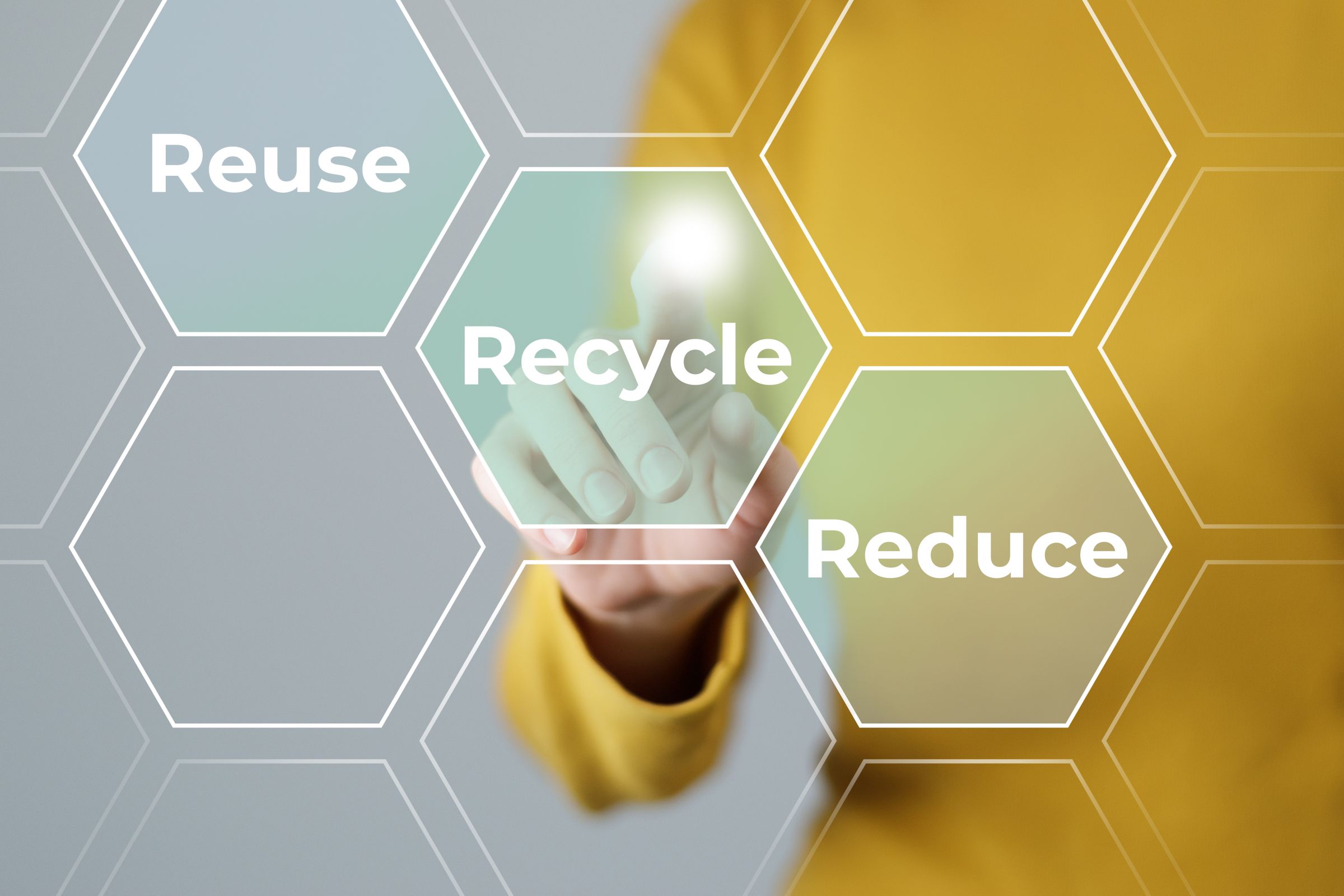
Gestion des matériaux
Politiques de gestion des matériaux
Nam Liong Global s'approvisionne principalement en matières premières auprès de fournisseurs externes. Les huit articles de procurement prioritaires comprennent des adhésifs (y compris des additifs pour adhésifs, des agents chimiques et des matières premières en caoutchouc), des fils spéciaux, des plastiques polymères, des bandes de fixation à crochets et boucles, des tissus, des accessoires et des matériaux d'emballage, des fibres spéciales et des mousses polymères. Le volume total des achats de matières premières, basé sur les 80 % supérieurs par valeur d'achat pour l'année 2024, s'élevait à 5 521,7 tonnes métriques, dont 32,08 tonnes métriques étaient des matériaux renouvelables.
À l'avenir, Nam Liong Global reste engagé envers notre philosophie axée sur la durabilité, en se concentrant sur l'augmentation de l'approvisionnement en matériaux renouvelables et en améliorant le recyclage et la réutilisation des déchets en interne, dans le but de maximiser l'efficacité des ressources et de minimiser l'impact environnemental tout en garantissant la qualité et la sécurité des produits. Nous continuerons à explorer des matières premières alternatives écologiques qui respectent les normes internationales telles que la norme mondiale sur le recyclage (GRS) et la certification du Conseil de gestion forestière (FSC), faisant ainsi progresser le développement d'une chaîne d'approvisionnement verte. De plus, nous gérerons l'approvisionnement et la composition des matières premières pour garantir que nos produits sont en pleine conformité avec les initiatives, réglementations et directives environnementales internationales, renforçant ainsi notre responsabilité environnementale et avançant vers la durabilité.
SASB-CG-AA-440a.4 Poids des matériaux achetés (tonnes)
Material Procurement Gestion selon les normes SASB
| Métrique | Déclaration de mise en œuvre SASB-CG-AA-440a.3 |
|---|---|
| 1. Facteur(s) environnemental(aux) et/ou social(aux) les plus susceptibles de menacer l'approvisionnement | ● En termes de facteurs environnementaux, increasingly stringent regulations related to climate change and net zero carbon emissions are driving up the costs of raw material production and transportation. The over-exploitation of natural resources may result in issues such as land degradation and water scarcity, further leading to supply shortages, price fluctuations, and potential quality instability. In addition, the production of raw materials involves carbon emissions, wastewater discharge, chemical pollution, and high energy consumption, all of which pose long-term environmental impacts and consequential challenges to the Corporate’s operational sustainability. ● En termes de facteurs sociaux, geopolitical tensions and global economic instability have increased the uncertainty of international trade, thereby raising the complexity of procurement and supply chain management. Meanwhile, the textile industry in Taiwan faces challenges such as capacity relocation, the exit of small-scale processing plants, and an aging skilled workforce, resulting in increased difficulty in sourcing raw materials and affecting supply chain stability. In addition, supply chain operations may involve issues such as poor labor conditions, the use of child labor, and inadequate occupational safety, posing potential risks to both the Corporate’s fulfillment of social responsibilities and reputation. |
| 2. Risques et/ou opportunités commerciaux associés aux facteurs environnementaux et/ou sociaux | ● En termes de risques, as the world moves toward net zero carbon emissions, the use and import of raw materials with high carbon emission may be restricted, resulting in increased compliance pressures and environmental costs for businesses. International markets placing growing emphasis on environmental, social, and governance (ESG) performance, and brand customers are imposing increasingly stringent requirements on green supply chains, non-compliance may lead to potential loss of orders. In addition, fluctuations in raw material prices and supply chain instability may affect production costs and operational efficiency, thereby increasing overall business risk. ● En termes d'opportunités, the increasing global demand for environmentally friendly materials is driving the expansion of markets for recyclable, low-carbon, and bio-based materials. Businesses that comply with environmental regulations and hold sustainability certifications are more likely to gain favor with international brands, thereby enhancing their market competitiveness. In addition, developing and certifying green products can strengthen corporate image, create sustainable business opportunities, and enhance businesses’ capacity for sustainable development. |
| 3. Stratégie de gestion pour traiter les risques et opportunités commerciaux | ● En termes de gestion de la chaîne d'approvisionnement, Nam Liong Global collaborates with suppliers who comply with restricted substances standards and sources raw materials certified to third-party environmental or social standards to effectively mitigate potential environmental and health risks. These standards include the Global Recycled Standard (GRS), the Forest Stewardship Council (FSC®) certification, the OEKO-TEX®STANDARD 100, and the bluesign® standard. A supplier sustainability self-assessment mechanism is established to regularly evaluate their environmental and social conditions. In addition, inventory pressure is reduced and supply chain resilience strengthened through coordinated supplier material preparation and batched shipments, while in-house production lines are expanded to enhance autonomous manufacturing capabilities and quality control, thereby mitigating potential supply chain disruptions. ● En termes de gestion des matériaux, Nam Liong Global continues to promote waste recycling and reuse initiatives, including the reintroduction of in-house production scraps and the off-site pyrolysis oil refining of waste rubber, thereby improving material utilization efficiency and reducing waste disposal costs. In addition, the Corporate advances environmentally friendly processes and green materials through the expansion of the Eco-Family product series, focusing on the use of recycled and bio-based materials, as well as solvent-free or water-based processes, with the objective of effectively mitigating the environmental impact throughout the product lifecycle. ● Moving forward, Nam Liong Global remains committed to continuously conducting organization-wide greenhouse gas (GHG) inventories and product carbon footprint assessments, enhancing data-driven management capabilities to support our sustainability-oriented decision-making. The Corporate will also deepen strategies for green supply chains and material recycling and reuse, collaborating with suppliers and customers to advance sustainable operations. |
